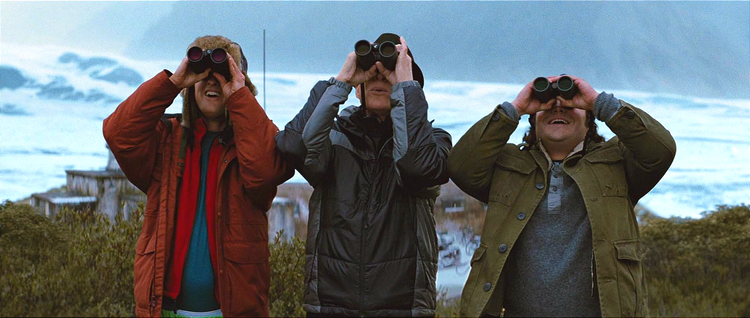
Running Commentary 11/10/2025
Hello,
Last week we had the 5th anniversary of this newsletter; today is another, more momentous and more somber anniversary. 50 years ago, in the evening of November 10th, 1975, the SS Edmund Fitzgerald was sunk in a storm in eastern Lake Superior. For the people of the Great Lakes region, this is second only to the Titanic in terms of famous shipwrecks. The Edmund Fitzgerald was, in its day, the largest ship in the Great Lakes, and remains the largest vessel to have sunk there, though it should be noted that three previous “Queens of the Lakes” — the Carl D. Bradley, the Daniel J. Morrell, and the William C. Moreland — had also sunk by that point. Its size, the total loss of its crew of 29, and the sudden speed with which it apparently sank all contributed to the wreck’s notoriety, but the biggest contributing factor is the ballad written by the Canadian folk singer Gordon Lightfoot.
When I noticed this newsletter would fall on the anniversary of the Edmund Fitzgerald’s sinking, I decided to dust off an old bird picture that also features a Great Lakes lighthouse and write a new accompanying account looking at the history of shipwrecks on the Lakes, of which there have been many.
Anyway...

Bird of the Week
This week we have one of the most plentiful birds in North America, the Ring-Billed Gull, whose population, centered in the U.S. and Canada, is estimated at over 1 billion1, or roughly 3 for every person in the same area. They can be found in nearly any open area, feeding on a wide range of items, including leftover human meals, though they are most commonly seen in huge groups at beaches. They are the dominant species of gull to be found on the shores of the Great Lakes.
Among the white-headed gulls, the ring-billed is relatively easy to identify, its namesake bill, with its black band and lack of red marks, being unique among gulls. In the Great Lakes they’re one of only three gulls commonly seen, the others being the American herring gull and the Bonaparte’s gull, the former being obviously larger and the latter being a black-headed gull. In less lucky coastal regions with more different species of gulls determining what specific species one is looking at can become a real challenge for birders, so much so that many dedicated gull field guides have been written over the years.2
To science, the ring-billed gull is Larus delawarensis, the name given by naturalist and noted Audubon fact-checker George Ord, who also was the first to describe many species with specimens provided by the Lewis and Clark expedition, such as the grizzly bear and the prairie dog. That such a common, widely-seen bird went undescribed until 1815 is a testament to how tricky noticing differences in gulls can be. Larus comes from a Greek word referring to some sort of voracious seabird, likely a gull,3 and the genus is the type genus of the gull/tern/noddy family. The species name references the Delaware river,3 where the species was first collected, which in turn is named for Delaware Bay, which the river runs into. The bay and the adjacent British colony-cum-American state are both named for Thomas West, the 3rd Baron De La Warr, an English lord who was the first Lord Governor of the Virginia Colony. In 1761 Thomas’s descendant John West had his baronry upgraded to an earldom; there is still an Earl De La Warr today, the 11th, an investment banker and hobby farmer named William Sackville.4
In the background of my depiction of the ring-billed gull, there is a lighthouse, the Little Sable Point Light, which marks the westernmost projection of Michigan’s Lower Peninsula into Lake Michigan. Despite not bordering the ocean, Michigan has the most lighthouses of any state.5 These are needed to mark points, shoals, islands, and bays around the Great Lakes, which are possibly the most dangerous navigable waters in the world. To those who’ve never been to the Lakes, it’s important to understand that they aren’t just more expansive versions of lake that might be in or near your town, where people go to swim or fish or boat; they are inland seas, with much more in common with the Mediterranean or Caspian seas, only freshwater rather than salt, due to their being up above sea level. They have tides. They have waves, often very big, erratic waves. That fresh water is lighter, less viscous than seawater, which makes the waves sharper and less predictable. The lakes are much shallower than the ocean, and their floors are not flat by any means, which produces an influence on the waves, causing them to bunch up together as they move from deeper to shallower waters. A big storm system can cover the entirety of the Lakes, with sustained winds sometimes shifting the entire bodies of water over in a measurable way.6 Furthermore, North America east of the Rockies, the larger region that the Great Lakes sit in the midst of, is exceptionally prone to severe storms.7
In their recorded history, the Lakes have claimed more than 6,000 vessels and more than 30,000 lives. The deadliest sinking* was that of the Lady Elgin, a paddle-driven steamboat that provided pleasure cruises up and down Lake Michigan between Chicago and Green Bay. In the early hours of September 8th, the Lady Elgin, tossed in a gale, collided with the lumber-hauler Augusta off the shore of what’s now the northern suburbs of Chicago; the Augusta survived the collision but the Lady Elgin was essentially ripped in half. Many were rescued by the people of Winnetka and Evanston, Illinois, but somewhere between three and four hundred passengers died in the wreck, depending on exactly how many were aboard.8 Like the Edmund Fitzgerald would over a century later, the sinking of the Lady Elgin inspired a popular song.9
The Little Sable Point Light and the hundreds of other lighthouses around the Great Lakes were a key part of keeping the vessels on the Lakes relatively safe. Today, radio transmitters and GPS, and much improved mapping of shores and shoals, have rendered these lights largely obsolete. They mainly remain in-place where they sit on state park land, as many do, serving historical and ornamental, rather than practical, purposes. Improvements to navigation, communications, and weather forecasting, along with a less-daredevil culture surrounding sailing through storms, have resulted in a vastly-improved safety record: in the fifty years since the Edmund Fitzgerald sank, there has not been another major shipwreck on the Great Lakes.10


(Left) “Big Red”, the historical harbor light at Holland, MI; (Right) transmitters and beacons marking the Macatawa channel to modern nautical navigation equipment, set across the channel from Big Red. | Photos by Derek Edwards
*Arguably the Lady Elgin was the second-deadliest sinking of a Great Lakes vessel, behind the Eastland, a passenger ship that capsized in 1915 while still in the Chicago river after being overloaded with both too many passengers and extra lifeboats, mandated in the wake of the Titanic disaster; 844 of 2,500+ passengers drowned within a matter of feet of the dock.^11^
- Callaghan, Corey T., Shinichi Nakagawa, and William K. Cornwell. “Global Abundance Estimates for 9,700 Bird Species.” Proceedings of the National Academy of Sciences 118, no. 21 (May 17, 2021). https://doi.org/10.1073/pnas.2023170118.
- Lund, Nicholas. “This New Guide Finally Simplifies Gull IDs.” Audubon, April 22, 2025. https://www.audubon.org/magazine/new-guide-finally-simplifies-gull-ids.
- Jobling, J. A. (editor). The Key to Scientific Names in Birds of the World (S. M. Billerman et al. editors), Cornell Laboratory of Ornithology, Ithaca.
- Bowles, Louisa Parker. “Gardening on the hoof: Countess De La Warr on the bucolic Buckhurst Park gardens.” Tatler, January 8, 2021. https://www.tatler.com/article/buckhurst-park-garden-tour-countess-de-la-warr-horses.
- Michigan Economic Development Corporation. “Lighthouses.” Pure Michigan. Accessed November 10, 2025. https://www.michigan.org/lighthouses.
- Celek, Lynn. “Why Ships Sink on the Great Lakes,” MapCuts n.d. https://mapcuts.com/blogs/news/why-ships-sink-on-the-great-lakes.
- Li, Funing & Chavas, Daniel & Reed, Kevin & Rosenbloom, Nan & Dawson II, Daniel. “The Role of Elevated Terrain and the Gulf of Mexico in the Production of Severe Local Storm Environments over North America.” Journal of Climate. 34. 10.1175/JCLI-D-20-0607.1.
- Lopez, Suzette. “A Heartbreaking End to the Lady Elgin.” Wisconsin Marine Historical Society, September 9, 2023. Accessed November 10, 2025. https://wmhs.org/a-heartbreaking-end-to-the-lady-elgin/.
- Murdock, Lee. “Lost on the Lady Elgin.” Country Dance & Song Society, January 20, 2022. https://cdss.org/publications/listen/song-of-the-month/january-2020-lost-on-the-lady-elgin/.
- Wexler, Ellen. “Nobody Knows What Sank the 'Edmund Fitzgerald.' but Its Doomed Final Voyage Will Always Be America'S Defining Shipwreck.” Smithsonian Magazine, November 10, 2025. https://www.smithsonianmag.com/history/nobody-knows-what-sank-the-edmund-fitzgerald-but-its-doomed-final-voyage-will-always-be-americas-defining-shipwreck-180987657/.
- Stranahan, Susan Q. “The Eastland Disaster Killed More Passengers Than the Titanic and the Lusitania. Why Has It Been Forgotten?” Smithsonian Magazine, October 24, 2014. https://www.smithsonianmag.com/history/eastland-disaster-killed-more-passengers-titanic-and-lusitania-why-has-it-been-forgotten-180953146/.
Curation Links
A Heartbreaking End to the Lady Elgin | Suzette Lopez, Wisconsin Marine Historical Society
The story of the Lady Elgin, a cruise ship that sank in 1860 in what remains the deadliest open-water sinking in Great Lakes history.
The Eastland Disaster Killed More Passengers Than the Titanic and the Lusitania. Why Has It Been Forgotten? | Susan Q. Stranahan, Smithsonian Magazine
"At 7:28 a.m., the Eastland listed to a 45-degree angle. The piano on the promenade deck rolled to the port wall, almost crushing two women; a refrigerator slid to port, pinning a woman or two beneath it. Water poured into open portholes in the cabins below deck. The most deadly shipwreck in Great Lakes history—a calamity that would take more passenger lives than the sinking of the Titanic or the Lusitania—was under way.”
The Sinking of the Carl D. Bradley | Unknown Author, Presque Isle County History Museum
The story of the deadliest freighter sinking on the Great Lakes. "The Carl D. Bradley, traveling light, departed Buffington, Indiana around 9:30 pm, Monday, November 17, 1958, and headed up Lake Michigan bound for the Port of Calcite. Roland Bryan, a sailor since age fourteen, was the master. This trip was the last for the season, the steamer was going home. The Bradley never made it. In less than 24 hours the Carl D. Bradley was on the bottom of Lake Michigan and 33 of the 35-man crew were dead or missing."
Nobody Knows What Sank the 'Edmund Fitzgerald.' But Its Doomed Final Voyage Will Always Be America's Defining Shipwreck | Ellen Wexler, Smithsonian Magazine
For the 50th anniversary of the ship’s sinking, a good, thorough rundown of the story of the Edmund Fitzgerald, including the investigations afterward trying to find how exactly it sank so quickly, and a look at Gordon Lightfoot’s famous musical eulogy.
Gales of November | FOX Television
[VIDEO] An interviews-heavy documentary about the Edmund Fitzgerald and its sinking. (48 minutes)
See the full archive of curations on Notion



Member Commentary